
Articles
MinistriesVideosThe Gods Of IndiaJourney to the Sky The Story of Amy Carmichael BooksDeath of a Guru, R. Maharaj TrainingStories
Witnessing to Hindus
Courtesy of N.S.R.K., Ravi, Interfaith Evangelism Team, North American Mission Board (SBC). Excerpted from The Evidence Bible by Ray Comfort. Mohandas Karamchand (Mahatma) Gandhi acknowledged the inability of his religion to atone for sin. Despite his moral lifestyle and good works, he admitted, "It is a constant torture to me that I am still so far from Him whom I know to be my very life and being. I know it is my own wretchedness and wickedness that keeps me from Him." All works-based religions lead to futility and death. It is only in Jesus Christ that sinners can find forgiveness for their sins and deliverance from death and hell. Excerpted from The Evidence Bible by Ray Comfort. |

The very name “Hinduism” is a regional/people group descriptive name. It is the name for the inhabitants and the religion of the Indus River region. The inhabitants were called Hindus and their religion was called Hinduism. Yet Hinduism today covers a diverse number of beliefs, with a few unifying themes… Locale
Estimates for the population of Hindus are between 800 million and 825 million. History
Holy Scriptures
The Puranas are mostly more recently written (500-100 A.D.) and are popularly well-known in India today with the myths and stories of the more recent gods of India. The Tantras are a distinct branch of the devotion movement with emphasis on the power of the divine feminine or goddess. There are also two epics in Hinduism, the Ramayana and the Mahabharata. The Ramayana gives an account of the noble king, Ram and his rescue of his wife, Sita, who was abducted. He does this with the help of Hanuman, the monkey god. The Mahabharata is the lengthy account of the war between two families, the Pandavas and the Kauravas. The Mahabharata includes the text of the Bhagavad Gita, perhaps the most popular of all Hindu texts. Temples and Worship
Temples are larger places of worship to which individuals or families will go for giving a puja or sacrifice. A congregational form of meeting is not typical for Hindus. An individual will come and offer something for a sacrifice to the god of the temple and receive back a small portion of what they offered, called a prasad. Though the family shrine is generally kept by the eldest female of the family, temples are run by males only, and generally by a Brahmin caste member. The idols or objects of worship in these temples can be as simple as a rock or stone, a somewhat conical-shaped stone called a lingam, or a presentation or representation of one of the many thousands and thousands of Hindu gods. As well, each village or area will often have a particular place of worship identified with it, often a natural feature such as a tree, a hill, a boulder, or a pond. Worship is incorporated into everything--worship of the sun as it rises, sacred designs drawn on the ground, etc. Famous natural features are also often places of worship, such as the Ganges river which is considered sacred. Temples grow from being viewed as successful in answering peoples' requests of the god(s) of that temple. A large temple will have one central chamber with many other smaller niche-shrines. The gods worshipped in these temples are usually associated with Shiva, Vishnu, or the goddess, generically known as Devi. Basic Beliefs
The Hindu View of JesusIn contrast to some of the more recent religions, such as Islam and Baha'i, Hinduism does not refer to Jesus in its scriptures, and he plays no role in any of the classical Hindu mythology. Nevertheless, due to the contact with Christianity over the last few centuries, some Hindu thinkers have found a place for Jesus in their view. These considerations have taken the form of two particularly noteworthy ideas.
The second way of trying to incorporate Jesus into Hinduism, not necessarily incompatible with the first, is to claim that Jesus learned the teachings which he later proclaimed in India. According to this notion, Jesus spent his so-called “silent years” between ages twelve and thirty at the feet of Hindu masters in India, and it is their teaching that he then proclaimed during his ministry. (See Did Jesus go to India as a child and learn from Hindu Gurus?) A Christian might respond to the second theory by pointing out that Christ's teaching was, of course, nothing like Hinduism, so that if he had learned it in India, he either forgot it or modified it beyond recognition on the way back to Palestine. And this problem also vitiates the idea that Christ was an incarnation of Vishnu because he certainly did not teach the Hindu dharma. And finally, since Jesus claimed to be the only way to God, if his teaching was true, he could not have been one of several ways to God. Thus, the attempts by some Hindus to incorporate Jesus tend to be forced and not very helpful. Salvation in Hinduism“Salvation” is an ambiguous word that can refer to a lot of phenomena. When trying to understand the concept of salvation in any religion, we need to be very clear on what the context is. It is not just a question of how one might get saved, but also what one is saved from and to. In Hinduism, salvation is most frequently referred to as “moksha,” which means most literally “release.” One is saved, not from sin, as a Christian might say, but from one's own existence. The fundamental problem for all human beings is that we live in a world of suffering and illusion, and that, left to ourselves, we will continue to do so for all time. As long as we exist in the phenomenal world (maya), we will suffer, and since we are doomed to move from life to life to life in the cycle of reincarnation (samsara), the suffering will theoretically never end. What drives this seemingly unbreakable chain of existences is the law of karma; it determines as what kind of a being (plant, animal, or human) and in what circumstances we will reappear in our next life, depending on what we do in this life. So, the point of moksha is to be released from the cycle of reincarnation and to attain a state of bliss in union with God. Hinduism has traditionally recognized three main paths of salvation.
So, in Hinduism one is saved from karma and reincarnation by following one of the three ways. Finally, the result will be a state of bliss in union with God (sometimes conceived of as identity with God). Heaven, as Christians think of it, would not be the goal since one would still be sent from heaven back to further physical lives. Factions in Hinduism
On a philosophical level, there are six schools of Hinduism; one should be careful, however, not to see these as “denominations” or divisions among temples, but as speculations of the religious elite. They are 1) samkhya, an atheistic and dualistic school; 2) yoga, which adds worship of God and physical discipline to samkhya; 3) nyaya, a rationalistic form of thought; 4) vaisheshika, a way of classifying all of reality into certain categories; 5) vedanta, which stresses the identity between God and the soul (Brahman-atman); and 6) mimamsa, a school advocating the literal interpretation of the Vedas. I am mentioning these schools only in order to show the diversity in Hindu philosophical thought, not because they would be particularly helpful in encountering Hinduism in ordinary life. Here there are three main divisions, playing to a certain extent the role of “denominations.” This division is based on which God is the main object of worship, and each of these schools has numerous subgroups. There are the Vaishnavites, who recognize Vishnu and the deities associated with him as highest form of God. Then there are the Shaivites, for whom Shiva or one of his cohorts is supreme. And finally, we have the Shaktites, who devote themselves primarily to one of the many forms of the goddess, such as Kali or Durga. The adherents of these schools do not necessarily exclude each other from worship or practice; there is much overlap, and individual practices are always going to be colored by specific local customs. MisconceptionsThe biggest misconception about Hinduism is that it is possible to speak about Hinduism in general as though all Hindus believed and practiced the same things. Perhaps the second biggest misconception about Hinduism is that one cannot make any general statements about Hinduism at all. The truth is that, even though no statement about Hinduism may be universally true for all Hindus, there are certainly beliefs and practices, such as karma and reincarnation that most Hindus share. A particular misconception by Westerners is that Hinduism is essentially pantheistic. Even though it is the case that many Hindus believe in the identity between an impersonal God and the universe, many Hindus (possibly the majority) would be more accurately described as theistic, viz. as believing in a personal God who is not identical with the world. Along that line but going in the opposite direction, a fourth misconception is that Hinduism is polytheistic, promoting belief in many separate gods. Now, obviously, Hinduism has a plethora of deities (popularly represented as 330 million); however, we must be aware of the fact that for many Hindus these are all manifestations of either a personal or an impersonal God. So, it is generally fair to describe Hinduism as polytheistic, but only if we keep in mind that for numerous Hindus, all the gods emanate from the same fundamental deity. Finally, a very popular misconception, stemming from the fame of Mahatma Gandhi, is that Hinduism is essentially pacifistic. This is not the case; Hinduism recognizes the Kshatriyas, or warrior, caste and recognizes the right of society to defend itself with arms if necessary. Outreach to Hindus
In the twentieth century, outreach to Hindus has taken on many forms, while also responding to the fact that Hindus have migrated to many parts of the world and taken their religion with them. On the whole, Hindu Indians have responded to the gospel more readily than their Muslim counterparts. It is estimated that about 3 percent of the population of India is Christian at present. The key to a Christian witness to Hindus (as is true in various ways for all groups), is to engage the person, not the religion of the person. Because Hinduism in general does not stress humanitarian efforts, outreach projects centered on works of mercy, such as educational facilities, hospitals, or leprosaria, have had great success. In the face of the perplexity engendered by the diversity of Hindu beliefs, the assurance of truth and salvation evidenced by Christians has spoken to many Hindus. Loving relationships that do not recognize the boundaries of caste or social station have led a number of Hindus to find Christ. And finally, sensitive Christian outreach to Hindus has demonstrated that Jesus Christ can free people from the domination of demons and bondage that often is an integral part of Hinduism outside of textbooks. Author: Paul Reid and Dr. Winfried Corduan. For more information on world religions, we recommend Dr. Corduan’s book Neighboring Faiths, IVP 1998 |





 Hindus are found mainly in the nation of India, where over 90% of Hindus live. As well, there are large populations of Hindus in Nepal, Mauritius, Fiji, Guyana, Suriname, Bangladesh, Malaysia, Trinidad and Tabago, and Bhutan.
Hindus are found mainly in the nation of India, where over 90% of Hindus live. As well, there are large populations of Hindus in Nepal, Mauritius, Fiji, Guyana, Suriname, Bangladesh, Malaysia, Trinidad and Tabago, and Bhutan.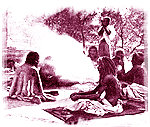 Different “ways” have developed over the history of Hinduism, Vedic Hinduism being the oldest, and then the ascetic and mystical way known as Vedantic Hinduism, and more recently the way of devotion, or Bhakti.
Different “ways” have developed over the history of Hinduism, Vedic Hinduism being the oldest, and then the ascetic and mystical way known as Vedantic Hinduism, and more recently the way of devotion, or Bhakti.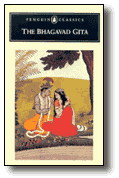 The oldest and most revered holy writings are the Vedas, consisting of four books or more correctly--collections. They are the Rig Veda, Sama Veda, Yajur Veda, and Atharva Veda. These are sacrificial hymns, chants, rituals and explanations. In addition to the Vedas, numerous other writings have been added through the years. These include the Upanishads, which are multiple in number, ten being most important. The common topics are: states of consciousness, dreams, meditations, self-realization (that you are divine), and the unity of all things. Then there are the Darshanas, with six major schools or Philosophical systems and teachings developed out of the Vedas: Nyaga, Mimamsa, Vaiseshika, Yoga, Samkhya, and Vendata.
The oldest and most revered holy writings are the Vedas, consisting of four books or more correctly--collections. They are the Rig Veda, Sama Veda, Yajur Veda, and Atharva Veda. These are sacrificial hymns, chants, rituals and explanations. In addition to the Vedas, numerous other writings have been added through the years. These include the Upanishads, which are multiple in number, ten being most important. The common topics are: states of consciousness, dreams, meditations, self-realization (that you are divine), and the unity of all things. Then there are the Darshanas, with six major schools or Philosophical systems and teachings developed out of the Vedas: Nyaga, Mimamsa, Vaiseshika, Yoga, Samkhya, and Vendata.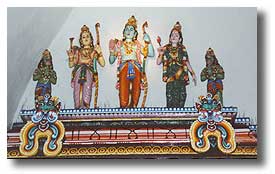 Places of worship are everywhere for Hindus. Shrines and temples are common in India and wherever Hindus live. The most basic place of worship for Hindus is the home shrine in which a person's individual personal gods are worshiped or the family's gods are worshiped. An individual will often keep their gods and pictures on a small shelf or alcove. The family gods will often have a designated place of the house for worship; in wealthier homes it may even be a room of the house.
Places of worship are everywhere for Hindus. Shrines and temples are common in India and wherever Hindus live. The most basic place of worship for Hindus is the home shrine in which a person's individual personal gods are worshiped or the family's gods are worshiped. An individual will often keep their gods and pictures on a small shelf or alcove. The family gods will often have a designated place of the house for worship; in wealthier homes it may even be a room of the house.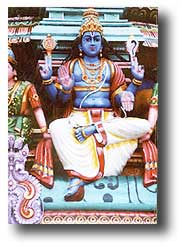 The first one is that Jesus was one of the incarnations (avatars) of God. Most Hindus believe that God, specifically Vishnu, took on human or animal forms at various times in order to perform certain feats that would preserve true Hindu teaching (the dharma). In this context, then, it has been argued that Jesus, along with Rama, Krishna, and others, was just one more divine self-embodiment. Whereas Christians generally believe that Jesus was the one and only incarnation of God, this view would hold that he was an incarnation, just not the only one.
The first one is that Jesus was one of the incarnations (avatars) of God. Most Hindus believe that God, specifically Vishnu, took on human or animal forms at various times in order to perform certain feats that would preserve true Hindu teaching (the dharma). In this context, then, it has been argued that Jesus, along with Rama, Krishna, and others, was just one more divine self-embodiment. Whereas Christians generally believe that Jesus was the one and only incarnation of God, this view would hold that he was an incarnation, just not the only one.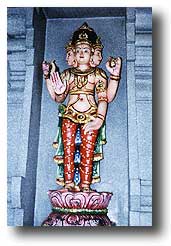 Hinduism prides itself on its tolerance of many different approaches to religion, and, consequently, there is a great amount of diversity in beliefs and practices. In fact, it is probably not unfair to say that in order to be a Hindu it is not as important to believe or do certain things as it is to fit into the basic cultural patterns that include veneration of the Vedas (the scriptures), the caste system, and cow protection.
Hinduism prides itself on its tolerance of many different approaches to religion, and, consequently, there is a great amount of diversity in beliefs and practices. In fact, it is probably not unfair to say that in order to be a Hindu it is not as important to believe or do certain things as it is to fit into the basic cultural patterns that include veneration of the Vedas (the scriptures), the caste system, and cow protection.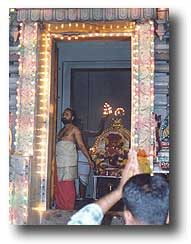 Christian missions to Hindus goes back to some of the earliest times of the church. According to an ancient tradition, the apostle Thomas was the first to carry the gospel to India, and there were some sporadic efforts to establish a church in India prior to the classical missions era, which dovetailed the colonial period.
Christian missions to Hindus goes back to some of the earliest times of the church. According to an ancient tradition, the apostle Thomas was the first to carry the gospel to India, and there were some sporadic efforts to establish a church in India prior to the classical missions era, which dovetailed the colonial period.